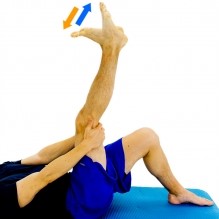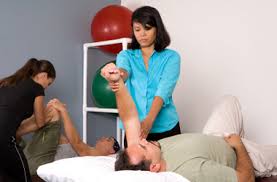Physical Therapy Practice: 5 tips to make patients more independent at home after they are discharged.
You did it! You have carved out the time from your schedule, you faithfully attended your therapy sessions, you kept up with your home exercises, and you have reached your goals. Today you were discharged from physical therapy. There was smiling and laughing, maybe even a couple tears as you say farewell to the people who helped you get to where you are. But your work is not done. You are a high-end convertible. Boy, are you nice! But you will need a little upkeep and maintenance to keep that shiny new care feeling. Here’s how you can be more independent and confident with your own care at home.
- Get it in writing. Yes, of course, you remember all your exercises and how to do them, until after you take that two week vacation. And was it right foot or left foot forward? And while we’re at it, a picture says a thousand words. You and your therapist should plan together to have a complete, legible, and understandable home exercise program. You want to do the work, and we need to provide you the tools.
- Make it manageable. Now you have a complete set of exercises, but there might be a lot to do. You don’t have time for all of these. You are a busy person. Let’s make sure we chop those down into bite size pieces. Your therapist can help you decided which exercises must be done every day and which ones can be done every couple of days. Making a schedule of a couple exercises to tackle each day insures that you are keeping up your strength and flexibility without feeling overwhelmed.
- Make it a routine. Ok now you have the exercises and you have a plan, but you still seem to be having a hard time finding the time. Try making it a set part of your routine. You know the one. Wake up, make coffee, brush teeth, etc. Insert “Exercise” into the equation. Set aside the time in your day beforehand. When it’s already in the schedule, you won’t have to add on the stress of squeezing it in. And if you really seem to be struggling to find the time. Remember that commercial breaks are an excellent reminder to get up and get moving!
- Know your “uh oh” plan. You are cruising now! Things are lining up just right. You have the exercises, you have the plan, you have the time, but you just hit a pothole. Maybe you had a rough long day that seems to be increasing your pain again. Maybe you tried a new activity and your body is not thanking you. Know the contents of your emergency kit. Know whether you should ice, rest, compress, and stretch. Know which exercises are going to help you most in that moment and which you might need to take a break from momentarily. If you are not sure of your plan before you walk out on discharge day, stop, turn around, and ask.
- Remember you can reach out. Yes, we want you to be independent. Yes, we want you to do steps 1-4 above. But knowing when to reach out is important. If a problem arises, and your “uh oh” plan has been put to the test but your usual exercises seem not to be helping, you may need your therapist opinion. Together, let’s stop a small problem before it becomes a big one. Let’s change that oil before we need a new engine. Then let’s remember that occasional bumps in the road don’t stop us from driving full speed ahead.
{{cta(‘5ff4c278-0ba6-49ca-bac0-9e7521d954f7’)}}





